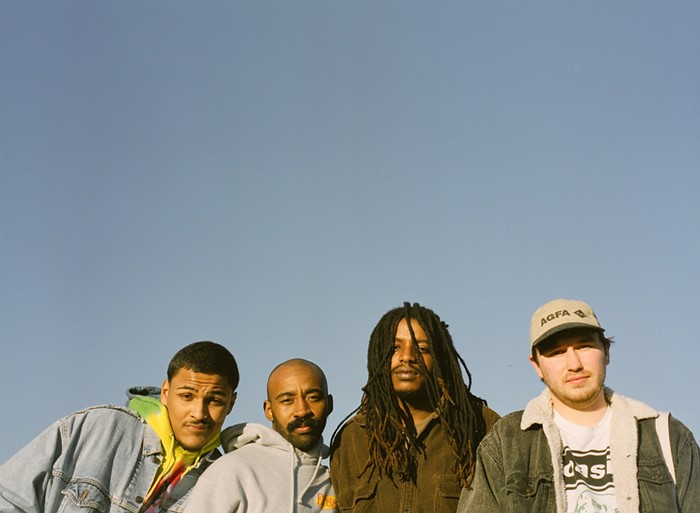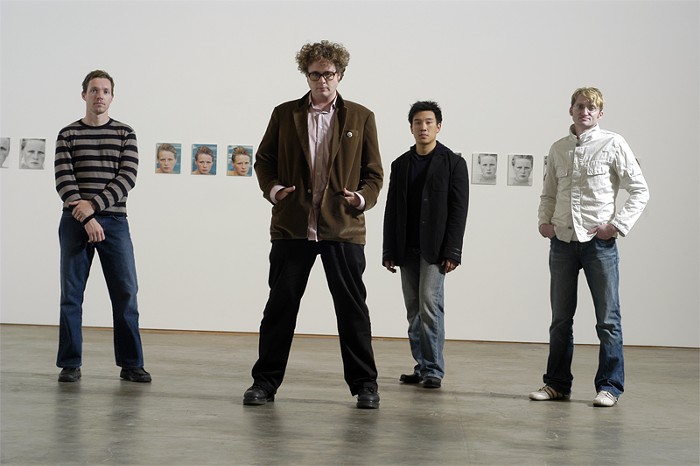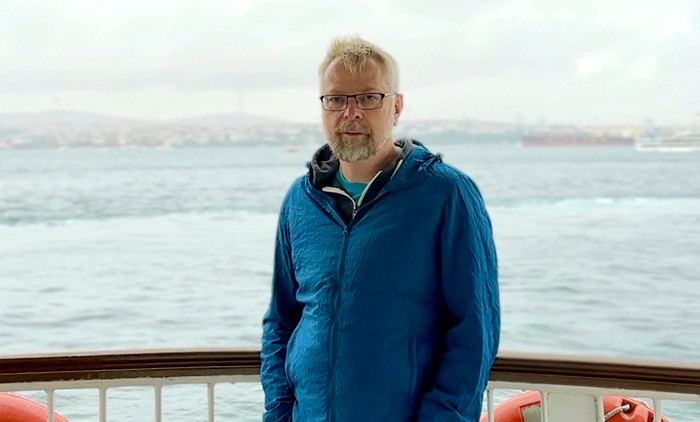The stentorian headline, published in 1953 by a Dublin newspaper, makes no sense today: STAN KENTON'S NEW SOUND IS SWEEPING THE WORLD. But back in the late 1940s and early 1950s, no group could equal the ear-bending volume, blustering brass, and grandiloquent self-importance of Stan Kenton and his big band. When asked by a Downbeat reporter "Where is jazz going?" Kenton replied, "We're headed to Cleveland on Thursday."
Despite overly broad proclamations and monumental album titles—Innovations in Modern Music, Stan Kenton Conducts the Los Angeles Neophonic Orchestra, and Contemporary Concepts all hold places of honor on my shelf—Kenton and his musicians took breathtaking risks, such as touring with a string section (at a loss of $200,000 in 1950 dollars), blithely premiering deeply dissonant works (most notably Robert Graettinger's suite City of Glass) to unsuspecting audiences, and quixotically championing a new brass instrument, the mellophonium.
Several years ago while pondering Kenton and his place in jazz, I e-mailed Clarence Acox, coleader of the Seattle Repertory Jazz Orchestra, who reminded me that "Kenton is an important part of the jazz legacy. Some people didn't like his style when he first came out, but he reached a lot of young people who were drawn to his sound and became jazz fans because of it. Also, Kenton jump-started the careers of a lot of great musicians, including other composers whose work was featured by the Kenton band."
Unlike Duke Ellington, hailed by Kenton as "the giant among us all," Kenton was a composer of modest ability. Rather than strive to be a great writer, Kenton dedicated himself to nurturing a crew of composer-arrangers. He not only hired Pete Rugolo, Gene Roland, and Bill Holman, Kenton also took chances by devoting entire albums to Holman, Dee Barton, and the inscrutable Graettinger, whose apocalyptic "Thermopylae" will sandblast your speakers with banshee screams.
While some of Kenton's experiments now seem dowdy, the band sounded best—and really swung—when forcibly welding square-shouldered swagger to the spark-hurtling grooves of a Latin jazz rhythm section. When Kenton "went Latin," the band usually triumphed, especially on the album Cuban Fire! composed by Johnny Richards (né Cascales).
Dedicated to preserving the original arrangements and singular instrumental textures of big-band jazz, the Seattle Repertory Jazz Orchestra showcases the best of Kenton (Sat June 20, Recital Hall at Benaroya, 7:30 pm, $15–$38; Sun June 21, Kirkland Performance Center, 3 pm, $15–$36), adding extra brass players (French horn and tuba) and percussionists to play two numbers from Cuban Fire!, "Recuerdos" and "Quien Sabe (Who Knows?)." The SRJO also revives signature Kentoniana such as "Artistry in Rhythm," "Eager Beaver," "Opus in Pastels," and "Intermission Riff." Not to be missed. ![]()



















